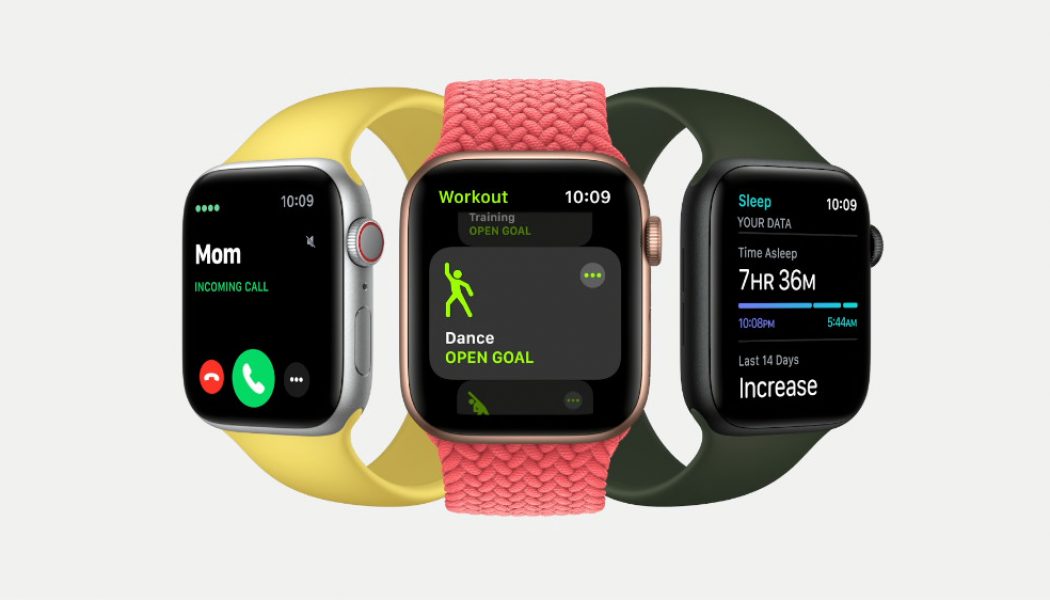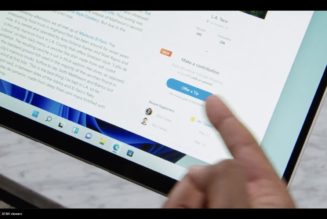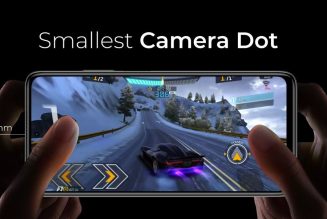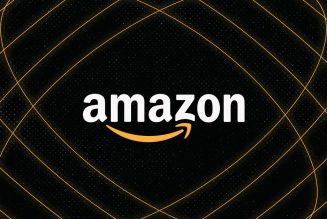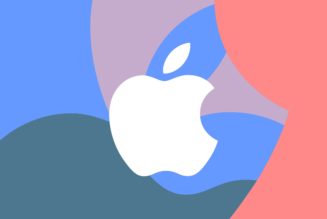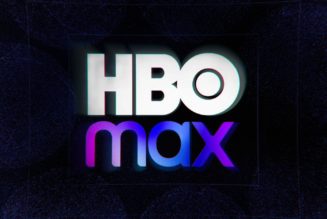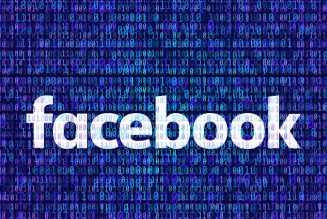
Even though Apple didn’t announce new iPhones yesterday, the event was a jam-packed hour. Apple announced four new hardware products, a major new service, and a new bundle. By any objective standard, that’s a big day. As I’ll note below, the most important products might not be the hardware, but Fitness Plus and the ability to make an Apple Watch a kid tracker.
Besides those announcements, the main thing that struck me is that Apple seems to be making a subtle but important shift in its product strategy this year. You may have heard of the “Good, Better, Best” pricing strategy — it’s been applied to Apple a bunch. I think what Apple is doing this year is making the “better” option …better — and also a little more expensive. It’s the “better better” model.
The old among us have Steve Jobs’ famous Mac product grid indelibly marked in our concept of how Apple approaches products. On one axis was “Consumer vs Pro” and the other was “Desktop vs Portable.”
But it’s not really applicable anymore on either axis and it certainly doesn’t work for the many kinds of products Apple makes now. There simply are more tiers than just “consumer” and “pro” for most product categories. Plus, in Apple world, the word “pro” itself doesn’t really mean “for professionals” so much as “the best thing” these days.
Take the Apple Watch announcements. Apple announced both a flagship Series 6 line of watches and a lower-cost SE line. At first, I thought of the Apple Watch SE as parallel to the iPhone SE. So it seemed to me that the trend is Apple needing to make more inexpensive products that are technically new because it’s harder to get consumers to buy last year’s model. But after some thought, I think that’s not quite right.
The Good, Better, Best cadence for the Apple Watch just happens to go by different names compared to the iPhone. The SE naming scheme just threw me. Here’s how I think it goes:
- Good: Apple Watch Series 3 / iPhone SE
- Better: Apple Watch SE / iPhone 11
- Best: Apple Watch Series 6 / iPhone 11 Pro
The “good” option at the bottom of the lineup actually serves two purposes. It’s a killer deal and makes Apple’s products more accessible. But it also makes space for the better option to be more advanced and pricier. Last year, Apple likely sold a kajillion Series 3 watches at its low price — this year it has a very clear upsell in the SE.
The same basic logic applies to the new iPad and iPad Air. The new iPad Air takes on a lot of the things that make the Pro compelling — so much so that unless the words “ProMotion” and “LIDAR” mean anything to you, the Air is a better choice. It’s also $100 more than the iPad Air was last year.
I think Apple’s not too worried about the iPad Air cannibalizing the iPad Pro — it’s still selling you an iPad, after all, and it’s surely making a good margin because that’s what Apple does. In fact, I suspect “margin” is often the answer as to why the better option is missing a feature the best option has. The Apple Watch SE is a Series 6 with less expensive components too: no blood oxygen monitor, always-on display, or the newest chip.
Put another way, all I’m talking about here is upselling. The quality of the “good” option gets you in the (now metaphorical) door and the upsell to the better option is sitting right there. Apple’s trick is to make that upsell a variant of its best thing instead of an improved version of the good thing. The Apple Watch SE is based on the Series 6. The iPhone 11 is closer to the 11 Pro than to the iPhone SE. And the iPad Air is now more like an iPad Pro than a basic iPad.
Like any model, this idea can break down with too much rhetorical pressure. I don’t know how it applies to the MacBook lineup, for example, but that lineup is in such flux right now with the impending Arm chips that I think it gets a pass. To me, this model is what Apple is striving for, but depending on where any given product line is at the moment it might be difficult to achieve.
Every time Apple releases a new product in a line, there’s always some variant of the question “Why does this need to exist when it’s so similar to that other thing?” I was asking it myself with the iPad Air and the Apple Watch SE yesterday. And now I think the answer is to make sure the “better” one is better — and it doesn’t hurt Apple if that means it’s just a little more expensive too.
Rounding up the Apple news
┏ Apple’s ‘Time Flies’ event: the 9 biggest announcements. This is a good summary of everything in one place. You can also find every story we published in this story stream.
┏ Apple ‘Time Flies’ 2020 live blog. If you want to see my and Nilay Patel’s thoughts in real time.
┏ Apple posts ASL translation of its ‘Time Flies’ event. Every company should do this.
Apple Watch
┏ Apple announces Apple Watch Series 6 with ability to measure blood oxygen levels. The blood oxygen measurement is the big new feature, but there’s also a U1 chip in there that may unlock some future capabilities someday, like unlocking your car or locating those as-yet unannounced AirTags.
┏ Apple announces Apple Watch SE, an affordable successor to the Series 3. The main things you’ll lose from the Series 6 is the always-on display, the blood oxygen monitor, ECG, and other bits like the U1 chip. Importantly, it has fall detection.
┏ Family Setup will let you manage multiple Apple Watches from a single iPhone. I think this low-key might be the most important thing Apple announced yesterday. You’ll have to pay a carrier a monthly fee for it to work, but I have to imagine that anybody looking at those kid tracker watches is going to think twice about getting an Apple Watch instead — especially if there ends up being kid peer pressure about it!
A couple notes I learned in briefings with Apple: the kids get notified of certain kinds of parental surveillance (like geofences) and can approve or deny sharing of certain health stats. Also for kids: the move ring tracks overall activity time, not estimated calories. Ostensibly this is because it just makes more sense to track how active a kid is, but I am also glad because it’s probably not good for kids to be thinking about caloric intake.
My very informal poll of my Twitter followers has a lot of replies from parents who are paying attention and thinking about this new feature. It also reveals a surprising number of parents who want to implant chips directly into their kids’ skulls.
┏ Apple is removing the USB power adapter from upcoming Apple Watch boxes. As I wrote when it was rumored that Apple would do this for the next iPhone: good. For the environment, I mean. Weirdly, Apple’s very expensive fancy versions of the Apple Watch still do come with a charger. I guess rich people wouldn’t be able to handle the logistics of finding their own charger in a drawer or something?
┏ Here’s how to pick between the Apple Watch Series 6, SE, and older models.
┏ Apple’s new Watch strap comes in 12 sizes, and you’ll need to measure your wrist to pick the right one. I saw a brief demo over video conference of these straps and they do stretch out quite far to fit over your hand before shrinking back to their original shape on your wrist. But this whole system for measuring your own wrist via a printout is really awkward. Not that I think there’s a better solution, but an uncomfortable watch is the worst and I worry people will get the wrong size and then just live with it.
There’s one extra complication, though. The largest three Loop sizes aren’t compatible with a 40mm Watch, while the three smallest sizes won’t work with a 44mm Watch. That means, for example, if you wanted the smaller Watch but have a large wrist, you might not be able to get one of the new Loop bands that fits you.
Services: Apple One and Fitness Plus
┏ Apple announces Fitness Plus virtual workouts. They’re not live like Peloton, but there is going to be new content weekly across a variety of different workout styles. An Apple Watch is required, though, which is maybe just a little disappointing.
┏ Apple confirms Apple One subscription bundle, bringing together Music, TV Plus, Arcade, and more. So there are three tiers, which feels like too many tiers. But okay, Apple has to charge more for a family plan than an individual plan because music labels charge more for that, I’m told. And both Fitness Plus and Apple News Plus aren’t available in all regions (Fitness Plus is only in six countries to start). Put those together and it kind of backs Apple into three tiers.
But I still feel like there’s a bit a confusion here, honestly. My own personal calculus is that the 200GB iCloud storage plan isn’t enough anymore. So I’m in for ten bucks a month for 2TB. Add in another Apple service like TV+ or Music and I’m creeping on $20 or $25 a month. So you start trying to do some math on what you want and don’t and eventually you just kind of land at it screw it, I’ll just get the one with everything for the whole family — and if you are a whole family it’s a good deal!
Still feels like upselling to me, just a little. And my regular reminder is that whenever you see a monthly price, you should do the mental math to see what it costs per year. That’s a scale that makes it easer to compare to other purchases or — you know — saving your damn money. So the Apple One Premier tier is $29.95/month or about $360 per year.
Finally — will Apple start offering bundles with hardware subsidies attached? In some ways it makes sense! In others, though, there are so many models of iPhone it’s hard to know which would get attached at what price.
┏ Apple says its new Apple One services bundle isn’t unfair to Spotify. Award for weirdest statement of the day goes to Spotify, who wanted to butt in and point out that Apple’s services bundle puts it at a disadvantage. In a well-crafted statement, Spotify could have made that case — but it chose more anger than clarity.
What’s interesting to me is that Apple felt the need to respond with a public statement. I think if there weren’t so much heat around antitrust right now, Apple wouldn’t have bothered.
iPad and iPad Air
┏ Apple announces updated eighth-generation 10.2-inch entry-level iPad for $329. The iPad continues to be one of the best deals in consumer tech. And Apple is continuing its efforts to get them adopted in schools in lieu of Chromebooks.
┏ Apple announces new iPad Air that looks more like an iPad Pro, starting at $599. The processor in it is newer than what’s in the iPad Pro, but the iPad Pro has more cores and a stronger GPU. And as for the switch to USB-C? It tells me that there’s no religion about ports at Apple. But I also don’t expect the iPhone 12 will switch over to USB-C.
Which I think is a pity, but I understand Apple’s calculus that it would be disruptive to a large user base. Then again, being willing to disrupt a user base in the name of moving tech forward is something Apple used to be unafraid of — literally it was called “courage” to drop the headphone jack.
┏ Apple will release iOS 14 and iPadOS 14 on September 16th. The drama is that developers have historically had a little more advance notice of these releases. It means that a bunch of devs who worked to create iOS 14-specific features or updates won’t be able to publicize them on day one of the update.
┏ Apple has sold more than 500 million iPads over the last decade. Apple made a big deal of the fact that more than 50 percent of all iPad buyers are first-time iPad buyers. It wants to make the case that the iPad has room to grow and the ability to encroach on the PC and Chromebook market. It specifically called out how both new iPads were faster. Though I have to say Apple touting benchmarks like this rings hollow to me — it should win on experience and software ecosystem. Chromebooks aren’t popular in schools because they’re fast, they’re popular because they’re inexpensive, convenient, and relatively easy to manage.
Subscribe to Processor
By subscribing, you are agreeing to receive a daily newsletter from The Verge that highlights top stories of the day, as well as occasional messages from sponsors and / or partners of The Verge. You are also consenting to our Privacy Policy and Terms of Use.
